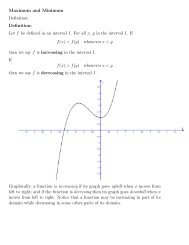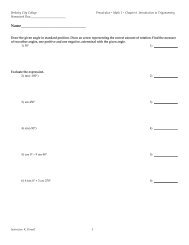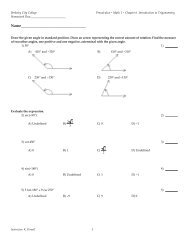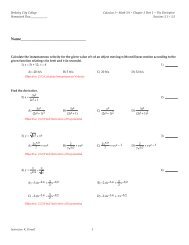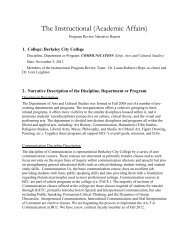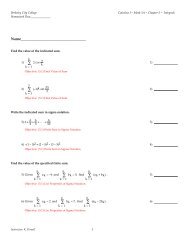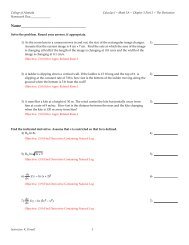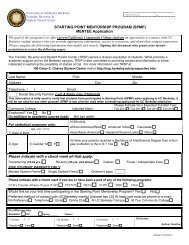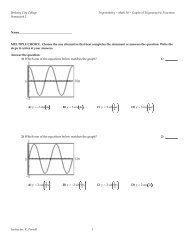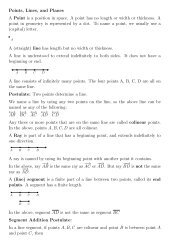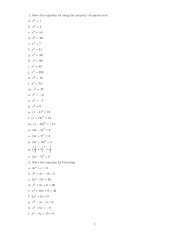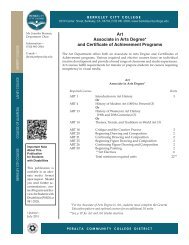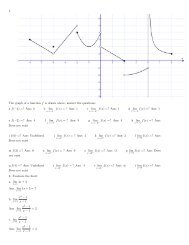Parallelogram - Berkeley City College
Parallelogram - Berkeley City College
Parallelogram - Berkeley City College
You also want an ePaper? Increase the reach of your titles
YUMPU automatically turns print PDFs into web optimized ePapers that Google loves.
Proof: Given rhombus ABCD, let the diagonals AC, BD intersect at E, we must<br />
prove that AC ⊥ BD<br />
D<br />
A<br />
E<br />
C<br />
B<br />
Statements<br />
Reasons<br />
1. AC and BD are diagonals to rhombus ABCD 1. Given<br />
2. AB ∼ = BC 2. Def. of rhombus<br />
3. AE ∼ = CE 3. Diagonals of bisect each other<br />
4. BE ∼ = BE 4. Reflexive<br />
5. △BAE ∼ = △BCE 5. SSS<br />
6. ∠BEA ∼ = ∠BEC 6. CPCTC<br />
7. AC ⊥ BD 7. Def. of perpendicular lines<br />
A square is a parallelogram with four congruent sides and four right angles. In<br />
other words, a square is a rectangle and a rhombus.<br />
D<br />
C<br />
A<br />
B<br />
ABCD is a square, which means that ∠A, ∠B, ∠C, and ∠D are all right angles.<br />
In addition, AB ∼ = BC ∼ = CD ∼ = DA<br />
Understand that rectangles, rhombus, squares are all parallelograms. Therefore<br />
they all have properties that a parallelogram has. Any theorem that is true about<br />
a parallelogram can be applied to a rectangle, rhombus, or square. These special<br />
parallelograms, of course, have more specific properties that may not be shared<br />
by other parallelograms. We use a table to indicate the properties that are true<br />
for each kind of figure:



